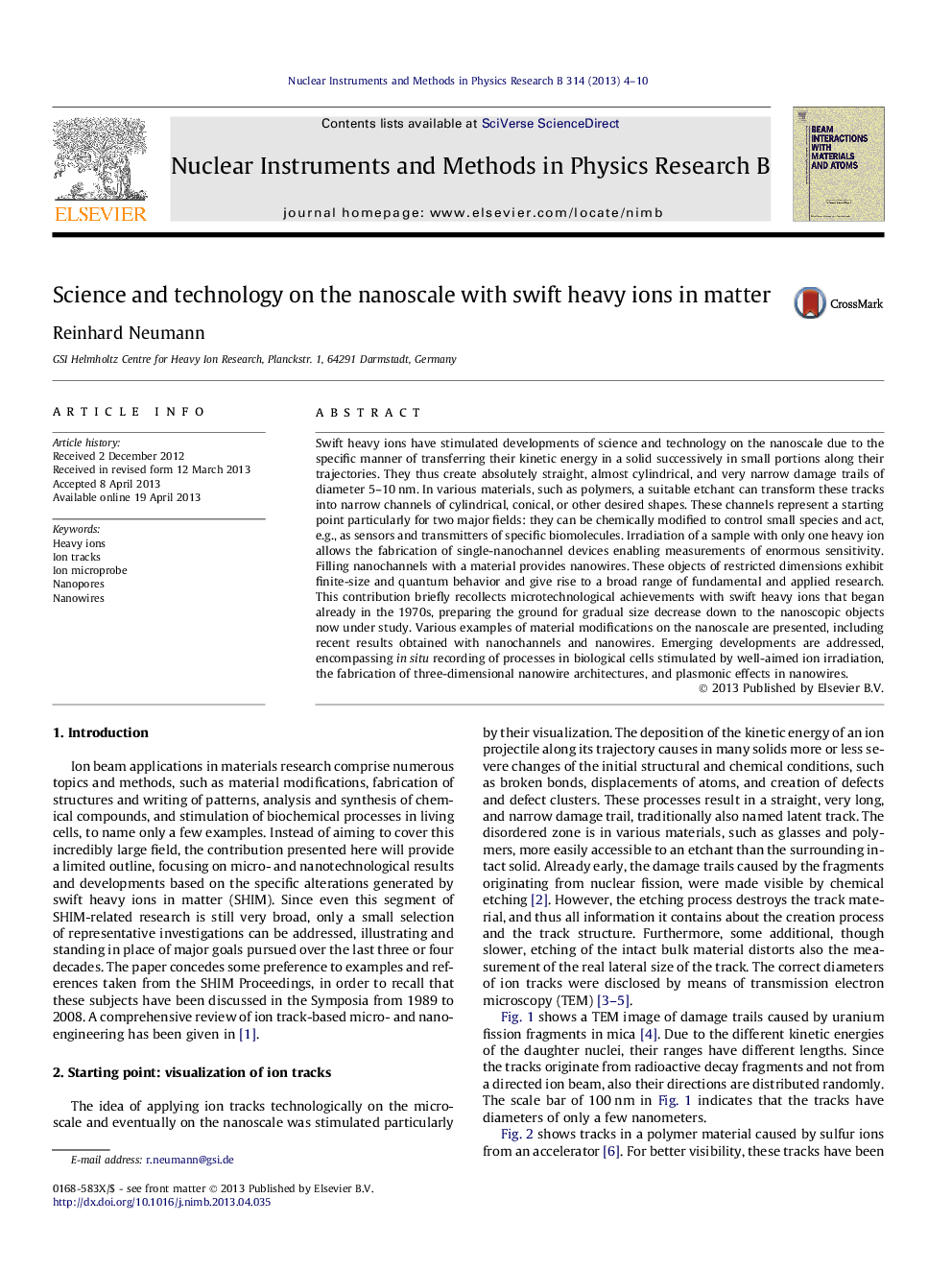| Article ID | Journal | Published Year | Pages | File Type |
|---|---|---|---|---|
| 1683779 | Nuclear Instruments and Methods in Physics Research Section B: Beam Interactions with Materials and Atoms | 2013 | 7 Pages |
Abstract
Swift heavy ions have stimulated developments of science and technology on the nanoscale due to the specific manner of transferring their kinetic energy in a solid successively in small portions along their trajectories. They thus create absolutely straight, almost cylindrical, and very narrow damage trails of diameter 5-10Â nm. In various materials, such as polymers, a suitable etchant can transform these tracks into narrow channels of cylindrical, conical, or other desired shapes. These channels represent a starting point particularly for two major fields: they can be chemically modified to control small species and act, e.g., as sensors and transmitters of specific biomolecules. Irradiation of a sample with only one heavy ion allows the fabrication of single-nanochannel devices enabling measurements of enormous sensitivity. Filling nanochannels with a material provides nanowires. These objects of restricted dimensions exhibit finite-size and quantum behavior and give rise to a broad range of fundamental and applied research. This contribution briefly recollects microtechnological achievements with swift heavy ions that began already in the 1970s, preparing the ground for gradual size decrease down to the nanoscopic objects now under study. Various examples of material modifications on the nanoscale are presented, including recent results obtained with nanochannels and nanowires. Emerging developments are addressed, encompassing in situ recording of processes in biological cells stimulated by well-aimed ion irradiation, the fabrication of three-dimensional nanowire architectures, and plasmonic effects in nanowires.
Related Topics
Physical Sciences and Engineering
Materials Science
Surfaces, Coatings and Films
Authors
Reinhard Neumann,
